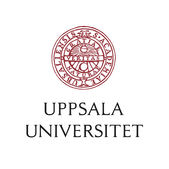|
View from the lab at the Hakai research station on Calvert Island (British Columbia, Canada). During his short sabbatical, Fabien had the opportunity to visit this remote research station in the wilderness of beautiful British Columbia. Besides successful science, this was an incredible experience. Fresh cells from this channel everyday!
We've just had an incredible stretch of good BBQ weather, which was turned into a small celebration for Anne's PhD half-time presentation. She did a strong act presenting her accomplishments and future work on the symbiosis in Meringosphaera. A special thank to the opponent Anna Karnkowska, from the University of Warsaw, for her insightful comments and suggestions.
We have just published a comparative genomic analyses of Ascetosporea parasites, including new genome data for Bonamia ostreae (Haplosporida), Marteilia pararefringens and Paramarteilia canceri (Paramyxida), and that of the undescribed Cercozoa sp. strain M6MM. We supplemented these new data with the genomes of Mikrocytos mackini, and Paramikrocytos canceri. Using this dataset, we carried out a comprehensive phylogenomic analysis of Rhizaria and show that Ascetosporean genomes have undergone functional reduction, primarily in metabolic pathways, and expansions in gene families encoding proteases and transporters. Together, our results present important new genomic information from a lineage of enigmatic parasites, shedding new light on the free-living to parasite evolutionary transition in Rhizaria.
Check it out here: Thorén MH, Onuț-Brännström I, Alfjorden A, Pecková H, Swords F, Hooper C, Holzer AS, Bass D, Burki F. 2024. Comparative genomics of Ascetosporea gives new insight into the evolutionary basis for animal parasitism in Rhizaria. BMC Biol. 22:103. Fabien received a sabbatical grant from the Science Faculty (Uppsala University) for a 3-months visit–a minibatical?–to Patrick Keeling's lab at the University of British Columbia (UBC). Plenty of sampling trips in the pipeline and time in the lab. Very grateful for the opportunity!
Welcome to Matias Wanntorp, a 45hp MSc student in bioinformatics who will work on Picozoa phylogenomics!
Welcome to Xavi Florenza, a joint postdoc with the lab of Lars Behrendt who will work on targeting cell sorting microfluidics solution! Welcome both, we are excited to have you in the group. Freshwater bivalves play key ecological roles in lakes and rivers, largely contributing to healthy ecosystems. The freshwater pearl mussel, Margaritifera margaritifera, is one bivalve species with rapidly declining population. The reasons for this decline are likely complex and are poorly understood. In a recent work led by PhD student Anders Alfjorden, we show that a parasitic infection by a novel gregarine parasite is linked to mass mortality events of M. margaritifery in Sweden. You can have a look at the preprint here.
Identification of a new gregarine parasite in mass mortality events of freshwater pearl mussels (Margaritifera margaritifera) in Sweden Anders Alfjorden, Ioana Onut Brännström, Niklas Wengström, Arni Kristmundsson, Mahwash Jamy, David Persson, Fabien Burki bioRxiv 2023.09.26.559503; doi: https://doi.org/10.1101/2023.09.26.559503 Žárský V, Karnkowska A, Boscaro V, Trznadel M, Whelan TA, Hiltunen-Thorén M, Onut-Brännström I, Abbott CL, Fast NM, Burki F, et al. 2023. Contrasting outcomes of genome reduction in mikrocytids and microsporidians. BMC Biol. 21:137.
|






